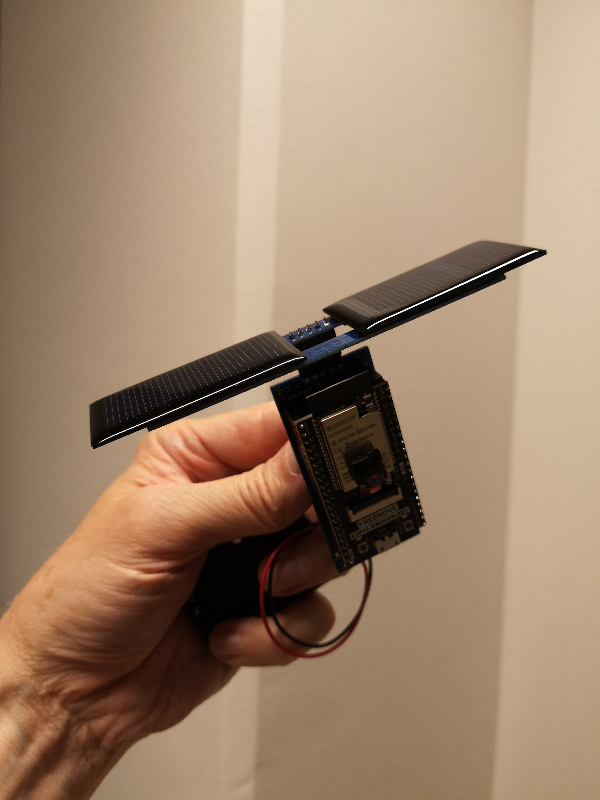The course is mainly given at a distance but has some physical meetings.
IE120V Electronics and Programming for Space Applications 7.5 credits
This course will be discontinued.
Last planned examination: Spring 2026
Decision to discontinue this course:
The course will be discontinued at the end of the spring semester 2026 according to the faculty board decision: J-2024-1353.
Decision date: 2024-06-11
The course was given for the last time in the spring semester 2024. The last opportunity for examination in the course is given in the spring semester 2026.
Contact the examiner to complete labs/projects/oral exam after the course is given for the last time.

The course is about electronics and programming of embedded systems. A mini satellite is used as an example in the labs. Different space applications are treated, but the knowledge is generally applicable in high school courses in physics.
Information per course offering
Course offerings are missing for current or upcoming semesters.
Course syllabus as PDF
Please note: all information from the Course syllabus is available on this page in an accessible format.
Course syllabus IE120V (Spring 2024–)Content and learning outcomes
Course disposition
Course contents
The course is intended for teachers in the basis and upper-secondary school that has become inspired of e.g. ESERO Cansat and now want to learn more about electronics and embedded systems or that want to increase his skills for teaching of mathematics, technology, physics and programming. The course is based on elements from courses on KTH Royal Institute of Technology, but with a selection that covers all parts of the technology for e.g. Cansat or a satellite. Apart from basic electromagnetism and electronics, introduction to the function of the microcontroller (e.g. an Arduino, hardware and software) is included, different sensors that can be used, power supply from battery or solar panels and radio communications including antennas. Also the challenges of the space environment for a practical satellite are described, including cosmic radiation, low and high temperatures, electricity supply with solar panels, principles of radio communications, satellite orbits and launch. The course activities interleave theoretical, practical (laboratory) and didactic items.
Intended learning outcomes
After completed course, the student is expected to be able to
- carry out simple calculations and computer simulations on electric nets using Ohm's law and Kirchhoff's laws
- carry out simple calculations and computer simulations on filters, amplifiers, sensors and radio range
- connect and measure on electric nets to verify own calculations and simulations
- connect and program microcontroller, sensors, amplifier and radio
- explain the use of satellites in the service of the humanity for e.g. communication, weather and climate monitoring for own pupils
- explain the technical function of a satellite by means of block model and practical demonstrations for own pupils
- plan, carry out and evaluate teaching for an optional student group with contents and abilities retrieved from the subject content of the course and related to didactic literature and current course syllabi and subject plans.
Literature and preparations
Specific prerequisites
The upper secondary courses Mathematics D/4 and Physics B/2.
Literature
Examination and completion
Grading scale
Examination
- TEN1 - Oral exam, 3.0 credits, grading scale: A, B, C, D, E, FX, F
- LAB1 - Lab exercises, 3.0 credits, grading scale: P, F
- PRO1 - Project, 1.5 credits, grading scale: P, F
Based on recommendation from KTH’s coordinator for disabilities, the examiner will decide how to adapt an examination for students with documented disability.
The examiner may apply another examination format when re-examining individual students.
If the course is discontinued, students may request to be examined during the following two academic years.
Examiner
Ethical approach
- All members of a group are responsible for the group's work.
- In any assessment, every student shall honestly disclose any help received and sources used.
- In an oral assessment, every student shall be able to present and answer questions about the entire assignment and solution.
Further information
Course room in Canvas
Offered by
Main field of study
Education cycle
Supplementary information
In this course, the EECS code of honor applies, see: http://www.kth.se/en/eecs/utbildning/hederskodex.